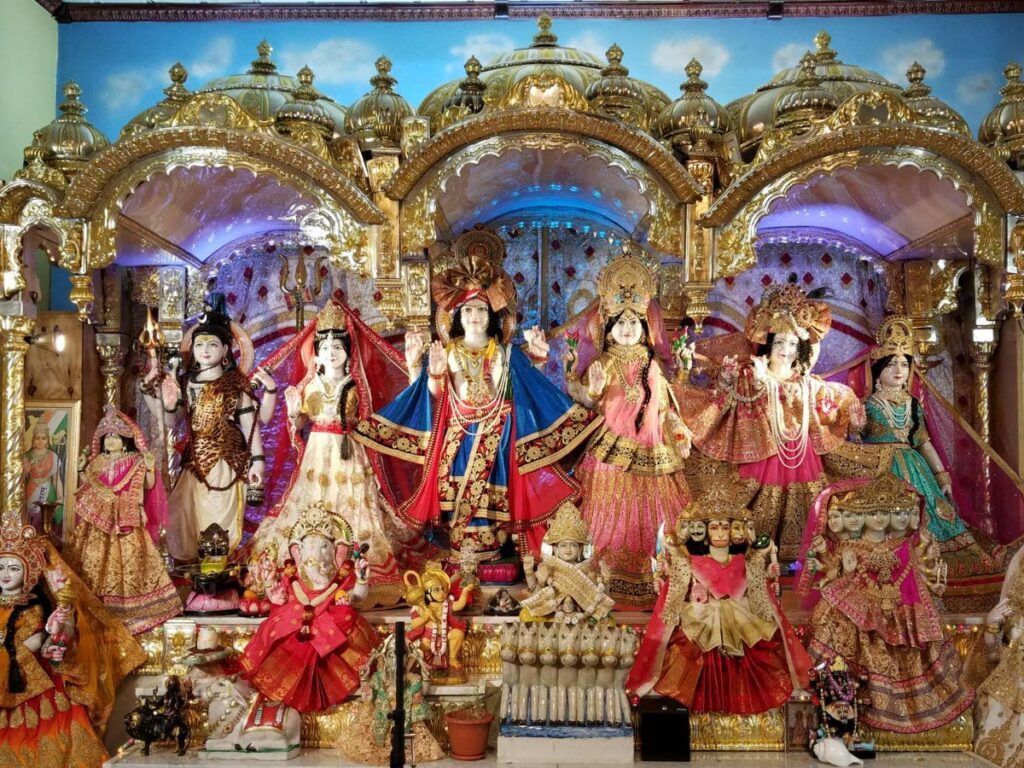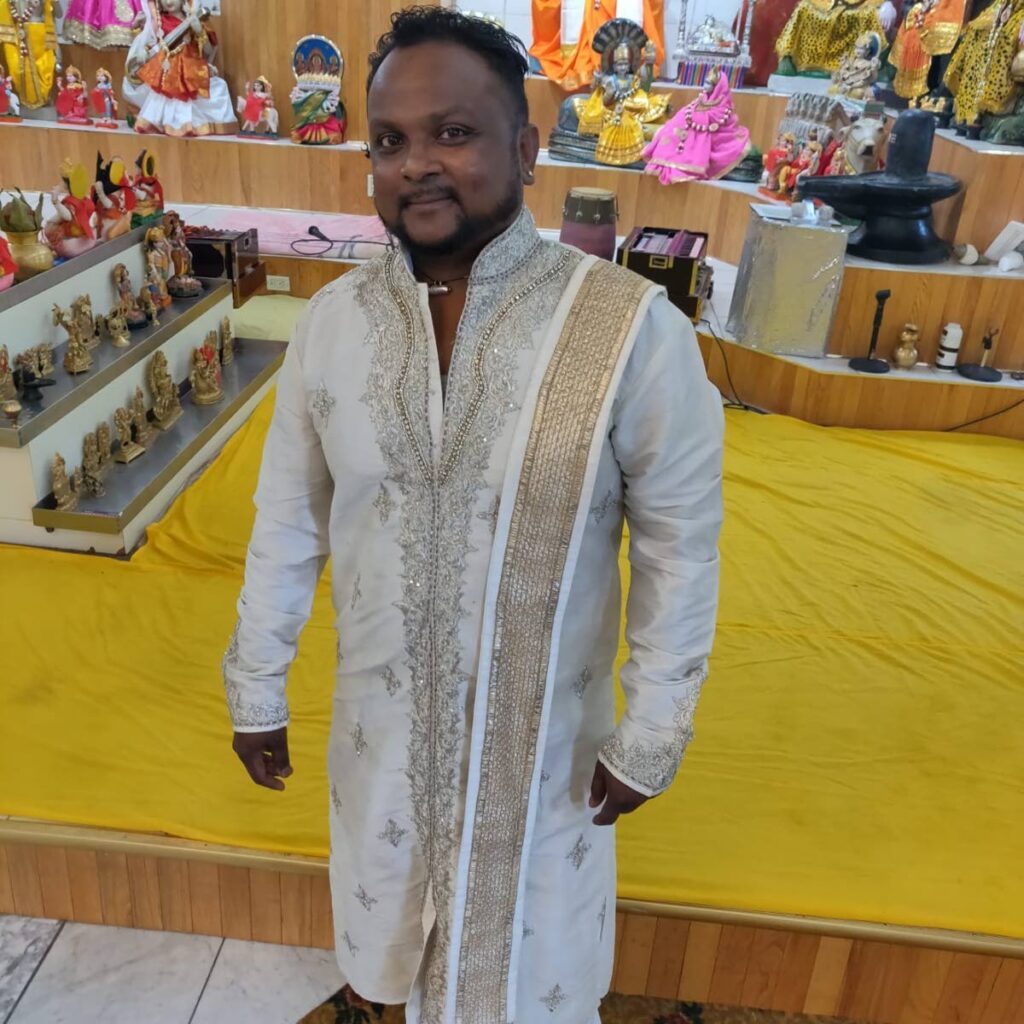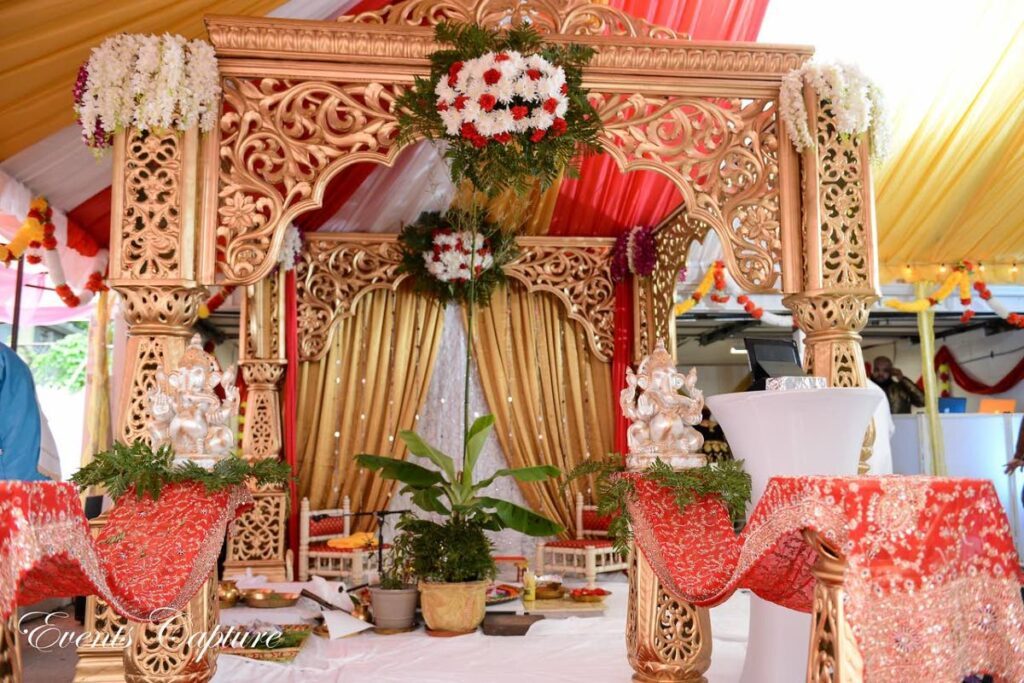Vinda Lalchan preserving Indian cultural traditions

BAVINA SOOKDEO
“After visiting certain villages in India and seeing their daily struggles, I am most grateful to our forefathers for having the strength and courage to leave what they knew to start fresh. Had they not done so, we wouldn’t have the quality of life we have now.”
So said Vinda Lalchan about the significance of Indian Heritage Month and Indian Arrival Day.
In the run-up to Indian Arrival Day on May 30, some organisations are also celebrating Indian Heritage Month.
Lalchan’s dedication to preserving and promoting Indian culture transcends borders and generations. His journey from humble beginnings in Trinidad to becoming a torchbearer of Indian traditions in the US, where he lives, and beyond is inspiring.
Growing up in Pierre Road, Felicity, Lalchan’s childhood was marked by adversity and resilience. Raised by his grandmother and older sisters after his parents separated due to domestic violence, Lalchan found comfort in spirituality at a young age.
“We didn’t have much, and due to problems in the home my grandmother started taking me to the Pierre Road Hindu Milan Temple. From there, I found solace in God,” he recalled.
His unwavering faith in Hinduism permeates every aspect of his life and work.
“My grandmother taught us the importance of prayer.”

Lalchan move to the US at eight with his mother and sisters, seeking a better life. Despite the challenges, his passion for Indian culture only grew stronger. He fondly reminisced about meeting his wife, Roshnie, when he was 12, describing her as his pillar of support amidst the turmoil of his home life.
Over the years, he has been deeply involved in preserving and promoting Indian culture in Trinidad, India and the US. One of his notable contributions is in dressing murtis (a clay or marble model of Hindu gods and goddesses), where he meticulously adorns Hindu deities with vibrant clothing and fresh flowers.
“I began attending The Sri Lakshmi Narayan Temple in Liberty Avenue, Queens, New York. There, I was welcomed with my enthusiasm to learn and was trained in murti dressing at the age of 12. While travelling back to Trinidad, I met Roshnie’s family (from Preysal) and I came across the Polo Ground Shiva Temple in Preysal. At that time, the murtis didn’t have clothing and I told myself that this will be my service one day.
“I then learnt how to dress murtis with fresh flowers from the Iskon Temple in Brooklyn. It was also there that I learnt to perfect my work of dressing murtis. For the last five years, I have been able to fulfil my promise made so many years ago. I started dressing the murtis at the Polo Ground Shiva Temple. I do this yearly.”

Lalchan is also involved in the Indian clothing industry, sourcing and selling ethnic wear. His entrepreneurial spirit was ignited during his first trip to India when he was 24, where he found inspiration for his business while shopping for his wedding.
“It was then I also purchased my first mandap (a covered structure with pillars which serves as the altar for Hindu weddings) to rent for weddings. I got inspired to do this while walking the streets of Mumbai and happened to come across a very exotic, traditional Indian wedding where the mandap was done in all fresh flowers.”
His business, Decorations by Vinda NYC, sells ethnic wear in the US and Trinidad and does decorating for weddings and other events. Additionally, he is a naaw – a person who assists in the preparation and execution of pujas and Hindu ceremonies.
Beyond his commercial ventures, Lalchan is deeply committed to charitable work, both in India and Trinidad. His encounters with underprivileged children in Mumbai sparked a desire to make a difference in their lives.
“During my second visit to India, I was walking in Mumbai after just having breakfast with my wife. I was carrying a half bottle of soft drink. A boy of about five years old approached us wanting something. I didn’t understand what he wanted, so we took out some money to give to him. He didn’t want it. He wanted the bottle of soda from us. It was there we understood that such things are a rare treat for those children. We took him to a stall nearby and bought him and a few others, who surrounded us in a matter of seconds, soft drinks and snacks.”
Witnessing the sheer delight on the children’s faces helped Lalchan and his wife to realise their purpose. Since then, the couple has been actively involved in feeding and providing essential items to those in need.
Despite his busy schedule, Lalchan maintains strong ties to Trinidad, visiting at least twice a year. He takes pride in the practice and observation of Hindu traditions and celebrations in Trinidad and Tobago.
“I’m amazed at how vast Hinduism has spread throughout my homeland. Everything we used to celebrate back in the days has grown. It makes me proud when I would see how grand Ganesh Utsav is, how spiritual more people have become.”
His most cherished recollections of Trinidad include participating in chowtal singing for Phagwa, engaging in bamboo splitting for Divali, attending Ram Leela performances, and indulging in delectable treats like saheena, pholourie, and traditional sweets.
Looking ahead, Lalchan plans to continue promoting Indian culture and heritage, moreso among the younger generations. He emphasised the importance of imparting cultural knowledge and traditions to the youth, ensuring their preservation for years to come.
In 2025, Lalchan and his wife will host a nine-night yagna (a ceremony where offerings of prayer, song and food to God is done) in Trinidad in honour of his two daughters.
“Through this yagna, my intention is to invite people to listen to the wonders of our holy texts and to feed as many people as we can. My wife and I believe that the greatest blessing is to feed people.”


Comments
"Vinda Lalchan preserving Indian cultural traditions"